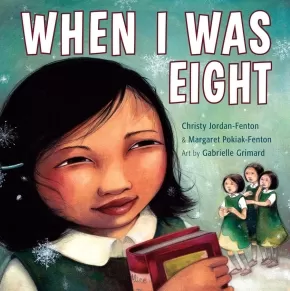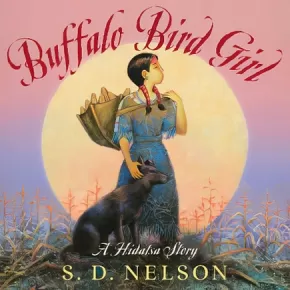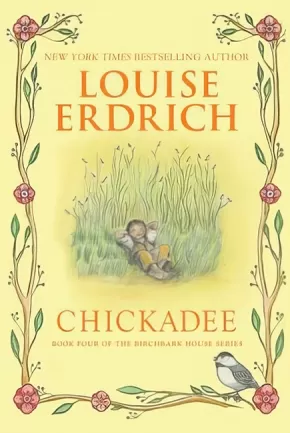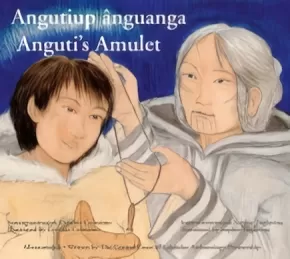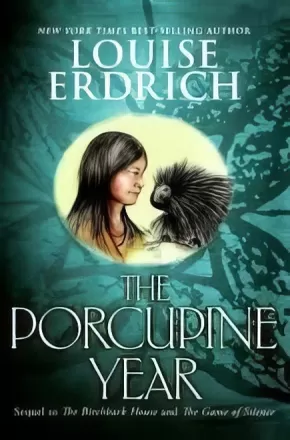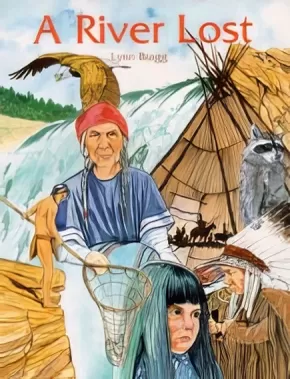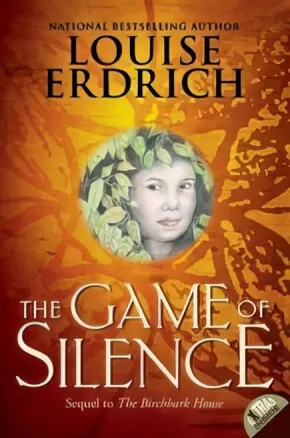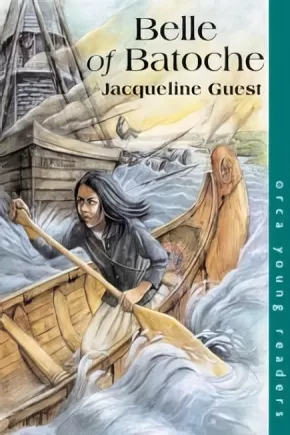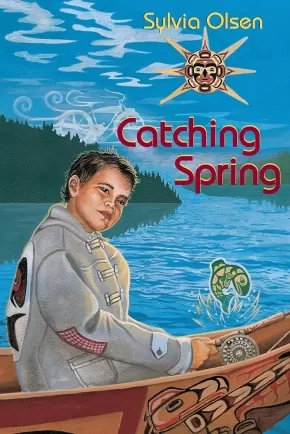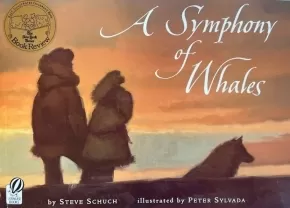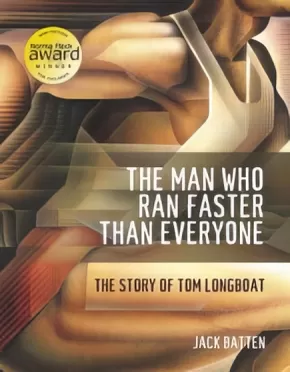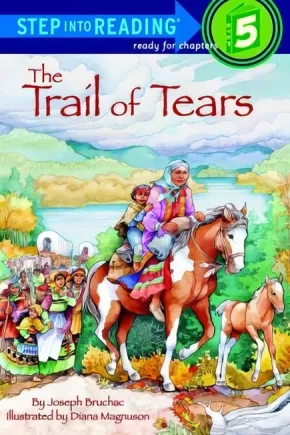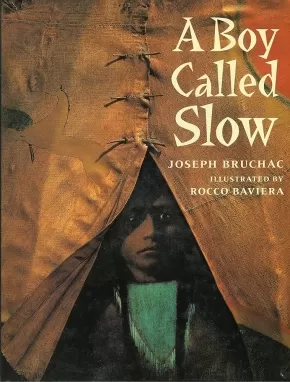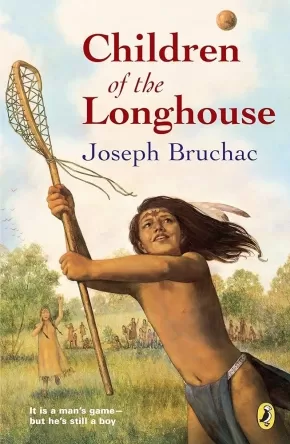
Historical Fiction
91
-
105
of
106 Results;
Sort By
Go To
of 8
When I Was Eight
$9.95
Artists:
Format:
Paperback
Text Content Territories:
Indigenous Canadian; Inuit; Inuvialuit (Mackenzie Inuit);
ISBN / Barcode: 9781554514908
Synopsis:
Synopsis:
Nothing will stop a strong-minded young Inuit girl from learning how to read.
Olemaun is eight and knows a lot of things. But she does not know how to read. She must travel to the outsiders' school to learn, ignoring her father's warning of what will happen there.
The nuns at the school take her Inuit name and call her Margaret. They cut off her long hair and force her to do chores. She has only one thing left -- a book about a girl named Alice, who falls down a rabbit hole.
Margaret's tenacious character draws the attention of a black-cloaked nun who tries to break her spirit at every turn. But she is more determined than ever to read.
By the end, Margaret knows that, like Alice, she has traveled to a faraway land and stood against a tyrant, proving herself to be brave and clever.
Based on the true story of Margaret Pokiak-Fenton, and complemented by stunning illustrations, When I Was Eight makes the bestselling Fatty Legs accessible to young children. Now they, too, can meet this remarkable girl who reminds us what power we hold when we can read.
Reviews
"A searing account of assimilation policies and a celebration of the human spirit In this picture-book memoir, an Inuit recollects how she begged her father to attend the church-run Indian residential school so she could fulfill her cherished dream to learn to read... What she discovers is the school is draconian... Olemaun describes how a nun cuts her braid, changes her name, and assigns an endless list of chores... Even as she labors, Olemaun finds strength in memories of her father's love and uses every opportunity to study the alphabet and sound out words. Effective shadow-ridden illustrations capture the pervasive atmosphere of abuse, but the final picture speaks volumes about Olemaun's determination and triumph: her face appears as large and shining as the sun emerging from darkness, because she has taught herself to read... A searing account of assimilation policies and a celebration of the human spirit." — Jeanne McDermott, Booklist, April 2013
"Pokiak-Fenton's true story of her experiences at residential school, was originally told in Fatty Legs.... When I Was Eight is an even more powerful read due to its emphasis on concise, affective text coupled with Gabrielle Grimard's quietly unpretentious artwork." — Canlit for Little Canadians
"When I Was Eight is a powerful story based on the true story of Margaret Pokiak-Fenton... It is a story of a young Inuit girl who goes to a residential school and suffers terrible abuse from the nuns at the school... Through all these trials, she perseveres in trying to learn to read. One day in class she is finally able to stand up to the teacher and show her own strength by reading aloud. It is a moment of victory! Although this story may be intended for younger students who are studying the Inuit, it could also be used in upper grades when discussing social justice issues. The story ties in with anti-bullying themes as well... Highly recommended." — Lori Austin, Resource Links, Vol. 18, No. 5, May 2013
"This excellent picture book, written as a companion to the longer version of it called Fatty Legs, is a powerful way to introduce the residential school experience to younger readers." — Sally Bender, Sal's Fiction Addiction, February 2014
Educator Information
Recommended Ages: 6-9.
Authentic First Peoples Resource K-9.
Grades 10-11 English First Peoples resource for the unit First Steps - Exploring Residential School and Reconciliation through Children's Literature.
This resource is also available in French: Quand j'avais huit ans
Additional Information
32 pages | 9.00" x 9.00" | Colour illustrations throughout.
Buffalo Bird Girl: A Hidatsa Story
$28.99
Artists:
Format:
Hardcover
Text Content Territories:
Indigenous American; Native American; Three Affiliated Tribes; Hidatsa;
ISBN / Barcode: 9781419703553
Synopsis:
Synopsis:
"I was born in an earth lodge by the mouth of the Knife River, in what is now North Dakota, three years after the smallpox winter." - Buffalo Bird Woman
Born in the 1830s, Buffalo Bird Girl was a member of the Hidatsa people, a Native American community that lived in permanent villages along the Missouri River on the Great Plains. Like other girls her age, Buffalo Bird Girl learned the ways of her people through watching, listening and then doing. She helped plant crops in the spring, tended the fields through the summer - scaring off birds and other animals, as well as hungry boys! - and in autumn joined in the harvest. She also learned to prepare animal skins, dry meat and perform other household duties. Along with her chores, however, there was time for playing games with friends or training her dog. Her family also visited the nearby trading post, where all sorts of magnificent things from the white man's settlements in the East could be seen.
Interweaving the actual words and stories of Buffalo Bird Woman with his artwork and archival photographs, award-winning author and artist S.D. Nelson has woven a poignant yet vibrant story, beautifully capturing the spirit of Buffalo Bird Girl and her lost way of life. The book includes a historical timeline.
Reviews
"The extraordinary illustration of this handsome volume begins with the endpaper maps and features acrylic paintings of the Hidatsa world reminiscent of traditional Plains Indian art. Pencil drawings and relevant, carefully labeled photographs round out the exquisite design. All the artwork both supports and adds to the text. An extensive author’s note and timeline supplement this beautiful tribute." —Kirkus Reviews, starred review
"Nelson's quiet, respectful tone capably balances the factual details of daily life in the Hidatsa tribe with the obvious joy and nostalgia Buffalo Bird Girl feels toward her childhood." —The Bulletin of the Center for Children's Books
"As a writer, storyteller, and traditional artist of the Sioux people, his perspective is genuine and effectively portrayed. This book would be enjoyable for anyone interested in history, but would also be an effective resource in the classroom to support the curriculum.”—Library Media Connection
"Nelson's acrylic paintings and b&w pencil drawings are intriguingly interlaced with the photographs, contrasting Native American figures in blunt profile with harvest colors and background textures that mimic dried spears of grass, leather skins, and basket weaves." — Publishers Weekly"
Educator Information
This fascinating picture book biography tells the childhood story of Buffalo Bird Woman. Through her true story, readers will learn what it was like to be part of this Native American community that lived along the Missouri River in the Dakotas, a society that depended more on agriculture for food and survival than on hunting. Children will relate to Buffalo Bird Girl’s routine of chores and playing with friends, and they will also be captivated by her lifestyle and the dangers that came with it.
Recommended Ages: 6-10
Additional Information
56 pages | 10.50" x 10.25"
Chickadee
$12.50
Artists:
Format:
Paperback
Text Content Territories:
Indigenous American; Native American; Anishinaabeg; Ojibwe (Chippewa);
ISBN / Barcode: 9780060577926
Synopsis:
Synopsis:
Winner of the Scott O'Dell Award for Historical Fiction, Chickadee is the first novel of a new arc in the critically acclaimed Birchbark House series by New York Times bestselling author Louise Erdrich.
Twin brothers Chickadee and Makoons have done everything together since they were born—until the unthinkable happens and the brothers are separated.
Desperate to reunite, both Chickadee and his family must travel across new territories, forge unlikely friendships, and experience unexpected moments of both unbearable heartache and pure joy. And through it all, Chickadee draws from the strength of his namesake, the chickadee, to carry him home.
Chickadee continues the story of one Ojibwe family's journey through one hundred years in America. In a starred review, School Library Journal proclaimed, "Readers will be more than happy to welcome little Chickadee into their hearts."
The paperback edition includes additional material, such as an interview with the author and activities. This story of Chickadee and his family is based on Louise Erdrich’s own family history.
Educator & Series Information
This is the fourth book in the Birchbark House Series, a series of Indigenous juvenile fiction novels written by Ojibwe writer Louise Erdrich.
The books in this series in order include:
The Birchbark House
The Game of Silence
The Porcupine Year
Chickadee
Makoons
Additional Information
224 pages | 5.12" x 7.62"
Anguti's Amulet (17 In Stock) - ON SALE
$11.96 $14.95
Artists:
Format:
Paperback
Text Content Territories:
Indigenous Canadian; Inuit;
ISBN / Barcode: 9781897317914
Synopsis:
Synopsis:
A bilingual story in Inuktitut and English, Angutiup ânguanga / Anguti’s Amulet is a story based on an Inuit archaeological site located along the central coast of Labrador that was occupied sometime between AD 1720 and AD 1750.
Itjasualigijet KamajiKatlutik Prâvinsiup suliaKaffinganit – Department of Tourism, Culture and Recreation, ikajuttiKatlutik Prâvinsiup PitaKautinginnit Neofulâmi Labrador-imilu, pitsiaKujitlutik itjasuattuligijinik piulitsisiaKujitlutik Kinguvatta Kimiggujatsagimmait.
Archaeological fieldwork is conducted under the auspices of the Provincial Archaeology Office, Department of Tourism, Culture and Recreation, which, with the Provincial Museum of Newfoundland and Labrador, ensures that sites and collections are protected for future generations.
Educator Information
A bilingual story in Inuktitut and English.
Recommended Ages: 5-10.
Additional Information
38 pages | 9.00" x 8.00" | Written by The Central Coast of Labrador Community Archaeology Partnership, illustrated by Cynthia Colosimo, and Inuktitut translation by Sophie Tuglavina, an Inuk educator.
Shi-shi-etko
$19.99
Artists:
Format:
Hardcover
Text Content Territories:
Indigenous Canadian;
ISBN / Barcode: 9780888996596
Synopsis:
Synopsis:
In just four days young Shi-shi-etko will have to leave her family and all that she knows to attend residential school.
She spends her last days at home treasuring the beauty of her world -- the dancing sunlight, the tall grass, each shiny rock, the tadpoles in the creek, her grandfather's paddle song. Her mother, father and grandmother, each in turn, share valuable teachings that they want her to remember. And so Shi-shi-etko carefully gathers her memories for safekeeping.
Richly hued illustrations complement this gently moving and poetic account of a child who finds solace all around her, even though she is on the verge of great loss -- a loss that native people have endured for generations because of the residential schools system.
This gentle story of a child on the verge of great loss was selected as the Aboriginal Children’s Book of the Year.
Awards
- Winner of the Anskohk Aboriginal Children's Book of the Year Award.
Educator Information
Recommended Grades: 1-10.
Curriculum Connections: Indigenous Studies, Visual Arts, Science, Health.
Recommended Authentic First Peoples resource K-9.
This illustrated children's story is recommended for English First Peoples Grades 10 for units pertaining to childhood through Indigenous writers' eyes and the exploration of residential schools and reconciliation through children's literature.
This book is available in French: Shi-shi-etko (French)
Additional Information
32 pages | 8.50" x 8.13"
The Porcupine Year
$12.50
Artists:
Format:
Paperback
Text Content Territories:
Indigenous American; Native American; Anishinaabeg; Ojibwe (Chippewa);
ISBN / Barcode: 9780064410304
Synopsis:
Synopsis:
Here follows the story of a most extraordinary year in the life of an Ojibwe family and of a girl named "Omakayas," or Little Frog, who lived a year of flight and adventure, pain and joy, in 1852.
When Omakayas is twelve winters old, she and her family set off on a harrowing journey. They travel by canoe westward from the shores of Lake Superior along the rivers of northern Minnesota, in search of a new home. While the family has prepared well, unexpected danger, enemies, and hardships will push them to the brink of survival. Omakayas continues to learn from the land and the spirits around her, and she discovers that no matter where she is, or how she is living, she has the one thing she needs to carry her through.
Richly imagined, full of laughter and sorrow, The Porcupine Year continues Louise Erdrich's celebrated series, which began with The Birchbark House, a National Book Award finalist, and continued with The Game of Silence, winner of the Scott O'Dell Award for Historical Fiction.
Educator & Series Information
This is the third book in the Birchbark House Series, a series of Indigenous juvenile fiction novels written by Ojibwe writer Louise Erdrich. The Birchbark House Series follows a character known as Omakayas and her Ojibwe community.
The books in this series in order include:
The Birchbark House
The Game of Silence
The Porcupine Year
Chickadee
Makoons
Additional Information
224 pages | 5.12" x 7.62"
A River Lost
$11.95
Artists:
Format:
Paperback
Text Content Territories:
Indigenous American; Native American; Sinixt (Arrow Lakes);
ISBN / Barcode: 9780888393838
Synopsis:
Synopsis:
A River Lost is the familiar story of an ancient culture infringed upon and altered forever by modern technology. It is the story of how the construction of the Grand Coulee Dam led to the destruction of a way of life for members of the Arrow Lakes Tribe. Sinee mat and her great-grandmother Toopa tell the engaging story of life on the Columbia River, before and after the dam.
Additional Information
32 pages | 8.50" x 11.00"
The Game of Silence
$12.50
Artists:
Format:
Paperback
Text Content Territories:
Indigenous American; Native American; Anishinaabeg; Ojibwe (Chippewa);
ISBN / Barcode: 9780064410298
Synopsis:
Synopsis:
Her name is Omakayas, or Little Frog, because her first step was a hop, and she lives on an island in Lake Superior.It is 1850, and the lives of the Ojibwe have returned to a familiar rhythm: they build their birchbark houses in the summer, go to the ricing camps in the fall to harvest and feast, and move to their cozy cedar log cabins near the town of LaPointe before the first snows.
The satisfying routines of Omakayas's days are interrupted by a surprise visit from a group of desperate and mysterious people. From them, she learns that all their lives may drastically change. The chimookomanag, or white people, want Omakayas and her people to leave their island in Lake Superior and move farther west. Omakayas realizes that something so valuable, so important that she never knew she had it in the first place, is in danger: Her home. Her way of life.
In this captivating sequel to National Book Award nominee The Birchbark House, Louise Erdrich continues the story of Omakayas and her family.
Educator & Series Information
This is the second book in the Birchbark House Series, a series of Indigenous juvenile fiction novels written by Ojibwe writer Louise Erdrich. The Birchbark House Series follows a character known as Omakayas and her Ojibwe community.
The books in this series in order include:
The Birchbark House
The Game of Silence
The Porcupine Year
Chickadee
Makoons
Additional Information
288 pages | 5.12" x 7.62"
Belle of Batoche
$9.95
Format:
Paperback
Text Content Territories:
Indigenous Canadian; Métis;
ISBN / Barcode: 9781551432977
Synopsis:
Synopsis:
Belle, an 11-year-old Métis girl, and Sarah both want the coveted job of church bell ringer. An embroidery contest is held to award the position, and Sarah cheats. Before Belle can expose her, the two are caught up in the advancing forces of General Middleton and his troops as they surround Batoche in the 1885 Riel Rebellion. The church bell disappeared that day and remains missing to this day.
Reviews
"This book can be a starting point for a more in-depth look at the Métis settlement and the struggle which ensued or it can be read just for enjoyment." — Resource Links, September 2004
Educator & Series Information
This book is part of the Orca Young Readers series, which are award-winning, bestselling chapter books for ages 8–11. Titles in this series include historical and contemporary stories with age-appropriate plots.
Additional Information
144 pages | 5.00" x 7.50"
Catching Spring
$7.95
Format:
Paperback
Text Content Territories:
Indigenous Canadian; First Nations; Salish; Coast Salish; Saanich (WSANEC); Tsartlip;
ISBN / Barcode: 9781551432984
Synopsis:
Synopsis:
The year is 1957, and Bobby lives on the Tsartlip First Nation reserve on Vancouver Island where his family has lived for generations and generations. He loves his weekend job at the nearby marina. He loves to play marbles with his friends. And he loves being able to give half his weekly earnings to his mother to eke out the grocery money, but he longs to enter the up-coming fishing derby. With the help of his uncle and Dan from the marina his wish just might come true.
Educator Information
Themes: contest, family, fishing, Indigenous.
Educator & Series Information
This book is part of the Orca Young Readers series, which are award-winning, bestselling chapter books for ages 8–11. Titles in this series include historical and contemporary stories with age-appropriate plots.
Additional Information
128 pages | 5.00" x 7.50"
A Symphony Of Whales (4 in Stock) - ON SALE
$7.50 $12.50
Artists:
Format:
Paperback
Text Content Territories:
Indigenous Siberian;
ISBN / Barcode: 9780152165482
Synopsis:
Synopsis:
Once, humans and whales made music together . . . but that was long ago.
Glashka is the only one in her village who can hear the voice of Narna, the whale. That gift leads her to great responsibility one day, when she discovers thousands of whales trapped in an inlet. The narrow route to the sea is rapidly icing over, and every day ice covers more of the open water the whales need to breathe. There seems to be no way out. . . . This story, based on an actual event, tells of a dramatic rescue--a tale of bravery and faith and the power of music.
Reviews
"During the winter of 1984-1985, nearly 3,000 beluga whales were trapped in the Senyavina Strait of Siberia--and saved by the bravery and persistence of villagers and the crew of a passing icebreaker. Schuch, a musician, turns this episode into a picture book by casting a child as heroine. Glashka has always been able to hear music in her head, and the ""old ones"" of the village tell her she hears ""the voice of Narna, the whale. Long has she been a friend to our people."" Glashka uses this talent to find the trapped whales and then to discover the secret of saving them. The plotting and diction are a little trumped-up, but on balance the text is tender and moving, and debut illustrator Sylvada's heavy oil paintings readily transport readers to the bitter winter days of Siberia. Emphasizing the changing light and the textures of characters' clothing instead of individual expressions, the illustrations cast a mood that reinforces the sober issues of the text." - Publisher's Weekly
Educator Information
Recommended Ages: 4-7.
Additional Information
32 pages | 11.00" x 8.00"
The Man Who Ran Faster Than Everyone: The Story of Tom Longboat
$16.99
Format:
Paperback
Text Content Territories:
Indigenous American; Native American; Haudenosaunee (Iroquois); Onondaga;
ISBN / Barcode: 9780887765070
Synopsis:
Synopsis:
Tom Longboat was a hero. A member of the Onondaga Nation, he was born on the Six Nations reserve in Oshwegen, near Brantford, Ontario. Despite poverty, poor training, and prejudice, Longboat went on to become one of the world’s best runners. In 1907, at the height of his fame, he won the Boston Marathon and ran in the 1908 Olympic Marathon. Longboat was one of the best-known people of his day, and certainly the most prominent member of the Six Nations. Throughout his career he had to race against opponents, as well as rumors of illegal running activities. Nevertheless, he maintained his dignity, and his achievements still inspire people who understand the great pleasure of running, and running fast.
Educator Information
Recommended for ages 10+
Additional Information
112 pages | 6.98" x 8.93"
The Trail of Tears
$7.99
Artists:
Format:
Paperback
Text Content Territories:
Indigenous American; Native American; Cherokee;
ISBN / Barcode: 9780679890522
Synopsis:
Synopsis:
In 1838, settlers moving west forced the great Cherokee Nation, and their chief John Ross, to leave their home land and travel 1,200 miles to Oklahoma. An epic story of friendship, war, hope, and betrayal.
A Boy Called Slow (9 In Stock) - ON SALE
$6.80 $8.50
Artists:
Format:
Paperback
Text Content Territories:
Indigenous American; Native American; Sioux; Lakota;
ISBN / Barcode: 9780698116160
Synopsis:
Synopsis:
The True Story of Sitting Bull from multi-award-winning author Joseph Bruchac.
Anxious to be given a name as strong and brave as that of his father, a proud Lakota Sioux grows into manhood, acting with careful deliberation, determination, and bravery, which eventually earned him his proud new name: Sitting Bull.
Reviews
"Being named Slow and growing up in the shadow of a great warrior hardly dwarfed the prospects of this protagonist: he grew up to be Sitting Bull. Bruchac's sensitively told story of Sitting Bull's coming-of-age reassures young boys that success comes through effort, not birth." —Booklist
Educator Information
Recommended for ages 4 to 8.
Additional Information
32 pages | 7.88" x 10.25"
Children of the Longhouse
$10.99
Format:
Paperback
Text Content Territories:
Indigenous American; Native American; Haudenosaunee (Iroquois); Kanyen'keha:ka (Mohawk);
ISBN / Barcode: 9780140385045
Synopsis:
Synopsis:
When Ohkwa'ri overhears a group of older boys planning a raid on a neighboring village, he immediately tells his Mohawk elders. He has done the right thing—but he has also made enemies. Grabber and his friends will do anything they can to hurt him, especially during the village-wide game of Tekwaarathon (lacrosse). Ohkwa'ri believes in the path of peace, but can peaceful ways work against Grabber's wrath?
Reviews
"An exciting story that also offers an in-depth look at Native American life centuries ago." —Kirkus Review
"Bruchac, who states in an afterword that his book is 'the result of a lifetime of learning from my Mohawk friends and neighbors,' eloquently conveys how democracy, respectand justice are integral components of the Native Americans' religion and government. Besides learning the origins of modern-day lacrosse and certain kinds of tool-making, readers will come away from this novel with a broadened awareness of a nearly vanished culture." — Publishers Weekly
Additional Information
176 pages | 5.13" x 7.75"
Sort By
Go To
of 8

